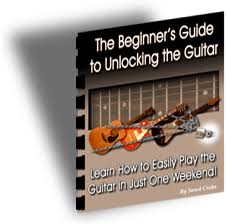How To Move Music From iPod to iTunes
Transferring music from an iPod to an iTunes library has been a desire for many people, even though they may have previously downloaded music from the iTunes store or personal cds to their iPod. Though Apple should have expected this to be a valuable characteristic, it determined that iTunes should not assist in allowing this to happen.
Some people suspect that Apple took these steps to protect music from being illegally traded. But what about people who wan to transfer their own music between their own computers using their iPod and iTunes? This isn't wrong or illegal!
You also might want need to transfer your iPod music to your own laptop or computer at work.
The default settings of iTunes will transfer the iTunes library on your new computer to your iPod. These settings will wipe out the library on your iPod, along with any music you have stored on it, and use the new, empty iTunes library. This is troublesome!
However, many people quickly learned how to get around this difficult issue. It unfortunately that meant deciding 'no' when presented with the option of automatically syncing your iPod and iTunes library.
To transfer music from your iPod back to your computer, a complicated series of steps is necessary, from deleting files from your iTunes folder, revealing hidden files, copying the iPod Control folder, creating a new folder and putting your songs somewhere else for safety. There were more steps, but you get the drift.
To avoid this very aggravating scenario or the complicated process necessary to avoid losing all of your music, third party vendors intervened and established some very helpful software.
Three programs that were created to aid you in easily transferring your iPod music to your iTunes library are iPod 2 iTunes, PodMaxx, and Tune Tools.
You can also copy playlists and videos to your computer from your iPod, for a small cost. Each of these programs includes features that iTunes hasn't yet included in their own software. These programs cost around $25 to $30, which is much cheaper than finding that your iPod library has been deleted! - 18780
Some people suspect that Apple took these steps to protect music from being illegally traded. But what about people who wan to transfer their own music between their own computers using their iPod and iTunes? This isn't wrong or illegal!
You also might want need to transfer your iPod music to your own laptop or computer at work.
The default settings of iTunes will transfer the iTunes library on your new computer to your iPod. These settings will wipe out the library on your iPod, along with any music you have stored on it, and use the new, empty iTunes library. This is troublesome!
However, many people quickly learned how to get around this difficult issue. It unfortunately that meant deciding 'no' when presented with the option of automatically syncing your iPod and iTunes library.
To transfer music from your iPod back to your computer, a complicated series of steps is necessary, from deleting files from your iTunes folder, revealing hidden files, copying the iPod Control folder, creating a new folder and putting your songs somewhere else for safety. There were more steps, but you get the drift.
To avoid this very aggravating scenario or the complicated process necessary to avoid losing all of your music, third party vendors intervened and established some very helpful software.
Three programs that were created to aid you in easily transferring your iPod music to your iTunes library are iPod 2 iTunes, PodMaxx, and Tune Tools.
You can also copy playlists and videos to your computer from your iPod, for a small cost. Each of these programs includes features that iTunes hasn't yet included in their own software. These programs cost around $25 to $30, which is much cheaper than finding that your iPod library has been deleted! - 18780
About the Author:
Thank you for reading this article. If you would like to read more about how to transfer ipod songs, please click the link included. On a side note, you can find ipod to computer transfer softwares and guides at http://ipodtoitunes.net/




